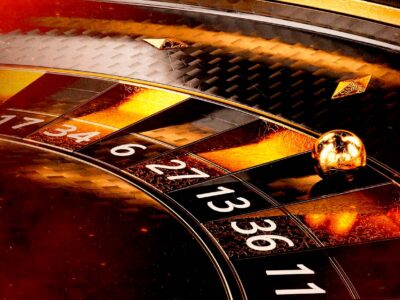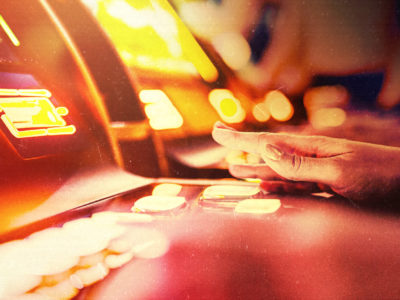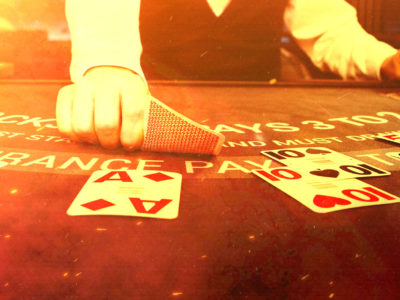Table of Contents
When you sit down in your first poker game, you probably don’t pay much attention to the seat you take. Chances are you were either assigned the seat randomly, or you chose it because you didn’t want to sit next to the player with the funky body odour (we’ve all been there).
And before the cards are dealt, your position at the table doesn’t seem important. In a no limit hold’em multi-table tournament, or a single-table Sit & Go format like you might play in a home game, everyone starts with the same amount of chips, everyone gets dealt two cards, and everyone takes turns at being the dealer.
But actually, your seat at the table–and the position you’re in during a hand–is very important in poker and should theoretically impact the way you decide to play from that position.
With that in mind, in this article, we’re going to take a look at a particular position at the poker table known as “the hijack”.
What is the ‘hijack’ in poker?
At a nine-handed poker table there are nine different positions. These are:
Small blind
Big Blind
Under the gun (UTG)
UTG+1
Middle position
Lojack
Hijack
Cutoff
The dealer (a.k.a. The button, or BTN)

A look at the poker table positions
You’ll notice that the hijack is the third from last in our list. That’s because the hijack is close to the “late positions”, meaning one of the last players to act pre-flop and post-flop.
The hijack sits after the “lojack” and before the “cutoff”, two to the right of whoever has the dealer button.
To learn more about poker positions, check out: Hijack, cutoff and under the gun: poker’s seating positions explained.
Why do they call the poker position the hijack?
To understand why this position is called the hijack, we first need to talk about the cutoff.
The cutoff is the position to the direct right of the dealer. This means that other than the player with the dealer button in front of them, the cutoff always gets to act last, whether it’s pre-flop or post-flop, should they decide to play the hand.
This comes with enormous benefits. The later you are to act, the more information you have, as you get to see what most of your opponents do before it’s your turn to play. For example, if you see a bunch of raising and three-betting before it gets to you in the cutoff, you might opt to fold a starting hand you would otherwise open-raise or call with.
But if it folds around to you in the cutoff, you’re now free to open-raise with wider range (i.e. a greater number of starting hands) as you now only have three players left to act behind you: the dealer, the small blind, and the big blind.
In that instance, the cutoff has the opportunity to put in a raise and potentially win the blinds before the button does, and with so few players behind, they have a great chance of succeeding.
Even if you open-raise from the cutoff with an average hand and one of the players in the blinds calls, you still get to act after them post-flop. Poker is a game of imcomplete information, so getting to see how your opponent acts before it’s your turn immediately gives you a leg up.
So, if the cutoff and button are very powerful positions at the poker table, wouldn’t it be great to seize that power?
That’s exactly why they call the seat to the right of the cutoff “the hijack”. The Oxford English Dictionary describes a “hijack” as the illegal seizure of a vehicle while in transit, and the player sat in the hijack seat has the chance to seize positional advantage from the cutoff and the button.
How should you play in the hijack?
The strategy you use when sat in the hijack depends on a few factors.
The first thing you should consider is the action that has already taken place during the hand. As mentioned, if there has already been a lot of raising by the time it gets to you, it’s safe to assume that those involved have strong starting hands. Therefore, you might want to play it safe and throw away any middling starting hands.
But if it has folded around to you, or there has only been one open raise, it’s recommended to play aggressively from all of the late positions, including the hijack, as you will often have the positional advantage should it go to the flop.
There’s no exact science of how to play from the hijack, but here are some examples for how you might want to play in each scenario:
If there has been a lot of action before it’s your turn:
Fold your average starting hands and only proceed with your strongest ones
If there has been one raise in front of you:
Proceed as you normally would with your strongest starting hands, but try mixing in some bluff raises with middling hands. You’ll apply pressure to the earlier positions and even if they call, you will have the positional advantage on the flop
If there has been no action:
Widen the range of starting hands you play and raise more often as you might be able to take down the blinds and antes
If you open-raise but the button, small blind or big blind raises you:
It’s up to you to determine whether your hand is strong enough to proceed. But remember, if a player from the blinds raises you and the button has folded, you’re guaranteed to have position post-flop
What are the recommended plays against the hijack?
As the hijack is a late position, where aggression is advised, this impacts the way you should play against the hijack from other positions.
For example, if you notice the hijack is three-betting a lot and you believe it’s because they’re trying to apply pressure to players in earlier positions, you might want to turn the tables by playing more aggressively against their raises and putting the pressure back on them.
If you’re sat in the cutoff, the button, the small blind or the big blind, you now know that hijack is likely to be playing a wide range of starting hands in a bid to win the blinds and antes. This allows you to widen your own range and play back at them.
But remember, if you decide to raise against the hijack pre-flop from the blinds, it’s best to go for a bet size larger than you’d usually raise to. This is because you’ll be out of position (i.e. first to act) on the flop should they call your raise, so by making the size bigger, you make it less attractive for them to call and see a flop with average starting hands.
Back to TopView Other Blogs




















